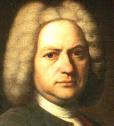
|
Fugue in C minor by J.S. Bach
The Bach Fugue in c-minor, BWV 575, is one of what I describe as Bach’s ‘orphan’ works. That is to say it is not paired with a prelude in the typical ‘binary form’ so prevalent in the music of Bach and other 17th and 18th century composers. Understood to be a comparatively early work, this piece represents Bach as he is still testing his compositional and virtuosic powers. The fugue is crowned with a toccata like cadenza culminating in a pedal solo. As with all of the music on my “Standing on the Shoulders of Giants’ disk, this piece is recorded on the 68 rank four manual and pedal Austin at First Presbyterian Church in Orange, NJ. Click on the image at the left if you would like hear this track.
|